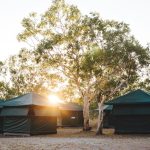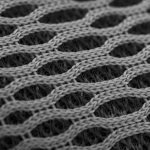When you're faced with the task of choosing the right waterproofing method, it's crucial to start by assessing your property's unique needs. You'll want to think about moisture-prone areas and the local climate, as these factors can significantly influence your decision. Balancing your budget with quality options is essential, but don't overlook the complexity of installation—your skill level might necessitate professional help. As you consider your choices, one key question remains: how do you ensure that your selected method not only addresses immediate concerns but also stands the test of time?
Table of Contents
Key Takeaways
- Assess moisture-prone areas and signs of water damage to determine the severity of the issue and appropriate solutions.
- Consider local climate and soil type, as these factors influence the effectiveness of different waterproofing methods.
- Evaluate your budget to balance immediate costs with long-term investment in quality waterproofing solutions.
- Research various waterproofing options, including exterior and interior methods, to find the best fit for your property's needs.
Assess Your Property's Needs
Before choosing a waterproofing method, you need to assess your property's specific needs and conditions.
Start by identifying areas prone to moisture, like basements, crawl spaces, or exterior walls. Look for signs of water damage, such as mold, mildew, or peeling paint. These indicators will help you understand how severe the problem is and where to focus your efforts.
Next, consider your local climate. If you live in an area with heavy rainfall or high humidity, your property may require more robust waterproofing solutions. Take note of the soil type around your property, as it can affect drainage and moisture retention. Sandy soils drain well, while clay soils can trap water, leading to more issues.
Don't forget about your budget. Determine how much you're willing to spend on waterproofing, as this will influence your options.
Finally, think about the long-term maintenance required for different methods. Some solutions may need regular upkeep, while others might offer lasting protection with minimal intervention.
Understand Different Waterproofing Options
There are several waterproofing options available, each designed to address specific issues and conditions in your property.
One common method is exterior waterproofing, which involves applying a waterproof membrane or coating to your foundation walls. This helps prevent water from seeping in from the outside.
Another option is interior waterproofing, which focuses on managing water that enters your space. This can include installing drainage systems or sump pumps to redirect water away from your home.
If you're dealing with minor leaks or dampness, consider using sealants or coatings that can be applied directly to walls and floors. They create a barrier that helps keep moisture at bay.
For more severe cases, you might need to explore underpinning or foundation repair methods. These options can stabilize and protect your home from water intrusion.
Lastly, don't overlook the importance of proper grading and landscaping around your property. By ensuring that water drains away from your foundation, you can significantly reduce potential waterproofing issues.
Understanding these options will help you choose the right solution for your specific needs.
Consider Your Budget
Considering your budget is crucial when selecting a waterproofing method, as costs can vary significantly based on the approach you choose and the extent of the issues you're facing. First, identify how much you're willing to spend. This will help narrow down your options and prevent you from overspending.
Next, consider both the short-term and long-term costs. Some methods may seem cheaper initially but could lead to higher repair costs down the line if they fail or require frequent maintenance. For instance, a DIY solution may save you money upfront, but if it doesn't work effectively, you might end up paying for professional services later.
Also, keep in mind that investing in a higher-quality waterproofing method can save you money in the long run by preventing water damage and related problems. Research various options and get quotes from different contractors to compare pricing and services.
Lastly, don't forget to factor in any potential financing options if your budget is tight. Finding the right balance between cost and effectiveness will ensure you make a smart decision for your property.
Evaluate Installation Requirements
Once you've established your budget, it's important to evaluate the installation requirements of each waterproofing method. Different techniques come with varying levels of complexity and labor intensity, so you need to assess what fits best with your situation.
First, think about the type of waterproofing you're considering—whether it's a membrane, coating, or drainage system. Each option has specific installation steps, materials, and tools you'll need. For example, some methods might require specialized equipment or extensive prep work, while others could be more straightforward and manageable.
Next, consider your own skill level and experience. If you're a DIY enthusiast, you might feel comfortable tackling simpler installations, like a liquid coating. However, more complex systems, like interior drainage, may be better suited for professionals.
Don't forget to factor in time—some methods may take longer than others due to drying times or multiple application layers.
Seek Professional Advice
Seeking professional advice can help you navigate the complexities of waterproofing methods and ensure you make informed decisions. When it comes to protecting your property from water damage, you don't want to leave anything to chance.
Professionals have the expertise and experience to evaluate your specific situation, identifying potential issues you might overlook. Consulting an expert allows you to tap into their knowledge of the latest products and techniques in waterproofing. They can recommend the most suitable methods tailored to your property's needs, whether it's a basement, roof, or foundation.
Additionally, they can provide insight into local building codes and regulations, ensuring your project complies with legal requirements. Don't hesitate to ask questions during your consultation. Understanding the reasons behind their recommendations can empower you to make the best choices.
Frequently Asked Questions
How Do Weather Conditions Affect Waterproofing Effectiveness?
Weather conditions significantly impact waterproofing effectiveness. For instance, heavy rain can overwhelm systems, while extreme heat may cause materials to degrade. You need to consider local climate factors when planning your waterproofing strategy to ensure optimal performance.
What Are Common Signs of Waterproofing Failure?
You'll notice common signs of waterproofing failure like water stains, mold growth, peeling paint, or dampness in walls and floors. Address these issues quickly to prevent further damage and maintain a dry, safe environment.
Can I Waterproof My Property Diy?
Yes, you can waterproof your property DIY. However, you should assess your skills and the project's complexity. Ensure you research appropriate materials and techniques to achieve effective results, avoiding future issues with moisture and damage.
How Long Does Waterproofing Last Before Needing Maintenance?
Waterproofing can last several years, but it's essential to monitor for wear and tear. Depending on the method used, you might need maintenance every 5 to 10 years to ensure ongoing protection against moisture.
Are There Environmentally Friendly Waterproofing Options Available?
Yes, there are environmentally friendly waterproofing options available. You can explore products made from natural materials, such as plant-based sealants or bio-based membranes, which effectively protect your space while minimizing environmental impact.
- Everything You Should Know About Nonwoven Wallpaper - July 11, 2025
- Woven vs. Nonwoven Bags: Which Is the Greener Choice? - July 11, 2025
- Nonwoven Fabric Production Methods: A Visual Guide - July 11, 2025






